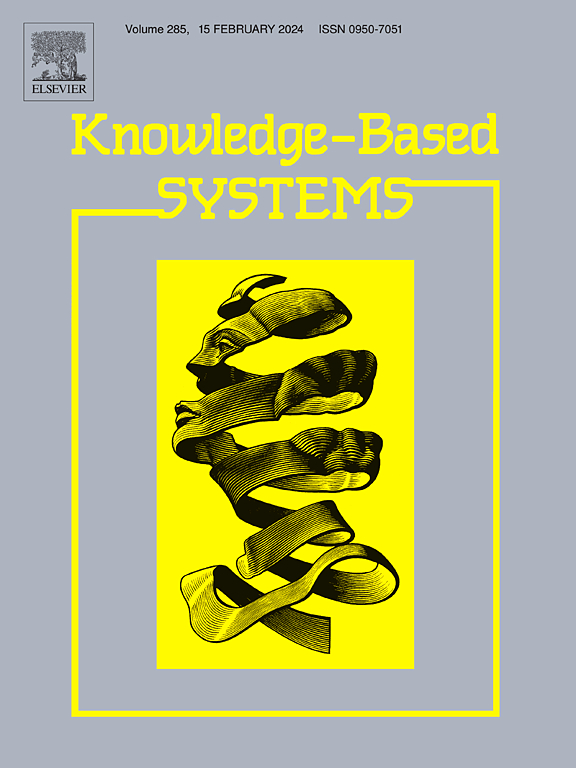基于会话推荐的跨级别关注协作关联网络
IF 7.2
1区 计算机科学
Q1 COMPUTER SCIENCE, ARTIFICIAL INTELLIGENCE
引用次数: 0
摘要
基于会话的推荐旨在根据匿名用户的行为序列预测下一个互动项目。主要挑战在于如何在有限的交互中感知用户偏好。最近的进展表明,在理解复杂的用户行为时,利用组合连续项目所代表的意图具有优势。然而,这些方法集中于通过考虑不同长度的连续项目来丰富意图的多样化表达,而忽略了对意图之间复杂转换的探索。这种局限性使得用户行为在动态变化中的意图传递不清晰,从而导致性能达不到最优。为解决这一问题,我们提出了基于会话推荐的跨层级关注的新型协作关联网络(简称为 CAN4Rec),该网络可同时对分层用户意图的层内和层间转换进行建模。具体来说,我们首先构建了两个层次的意图,包括个体层次的意图和聚合层次的意图,每个层次的意图都是基于顺序转换得到的。然后,设计跨层级关注机制来提取不同层级意图之间的相互转换。捕捉到的相互转换是双向的,包含从个人层面到聚合层面的意图,以及从聚合层面到个人层面的意图。最后,我们生成定向会话表示,并将它们结合起来,实现对下一个项目的预测。在三个公共基准数据集上的实验结果表明,所提出的模型达到了最先进的性能。本文章由计算机程序翻译,如有差异,请以英文原文为准。
Collaborative association networks with cross-level attention for session-based recommendation
Session-based recommendation aims to predict the next interacted item based on the anonymous user’s behavior sequence. The main challenge lies in how to perceive user preference within limited interactions. Recent advances demonstrate the advantage of utilizing intent represented by combining consecutive items in understanding complex user behavior. However, these methods concentrate on the diverse expression of intents enriched by considering consecutive items with different lengths, ignoring the exploration of complex transitions between intents. This limitation makes intent transfer unclear in the user behavior with dynamic change, resulting in sub-optimal performance. To solve this problem, we propose novel collaborative association networks with cross-level attention for session-based recommendation (denoted as CAN4Rec), which simultaneously models intra- and inter-level transitions within hierarchical user intents. Specifically, we first construct two levels of intent, including individual-level and aggregated-level intent, and each level of intent is obtained based on sequential transitions. Then, the cross-level attention mechanism is designed to extract inter-transitions between different levels of intent. The captured inter-transitions are bi-directional, containing from individual-level to aggregated-level intents and from aggregated-level to individual-level intents. Finally, we generate directional session representations and combine them to realize the prediction of the next item. Experimental results on three public benchmark datasets demonstrate that the proposed model achieves state-of-the-art performance.
求助全文
通过发布文献求助,成功后即可免费获取论文全文。
去求助
来源期刊

Knowledge-Based Systems
工程技术-计算机:人工智能
CiteScore
14.80
自引率
12.50%
发文量
1245
审稿时长
7.8 months
期刊介绍:
Knowledge-Based Systems, an international and interdisciplinary journal in artificial intelligence, publishes original, innovative, and creative research results in the field. It focuses on knowledge-based and other artificial intelligence techniques-based systems. The journal aims to support human prediction and decision-making through data science and computation techniques, provide a balanced coverage of theory and practical study, and encourage the development and implementation of knowledge-based intelligence models, methods, systems, and software tools. Applications in business, government, education, engineering, and healthcare are emphasized.
 求助内容:
求助内容: 应助结果提醒方式:
应助结果提醒方式:


